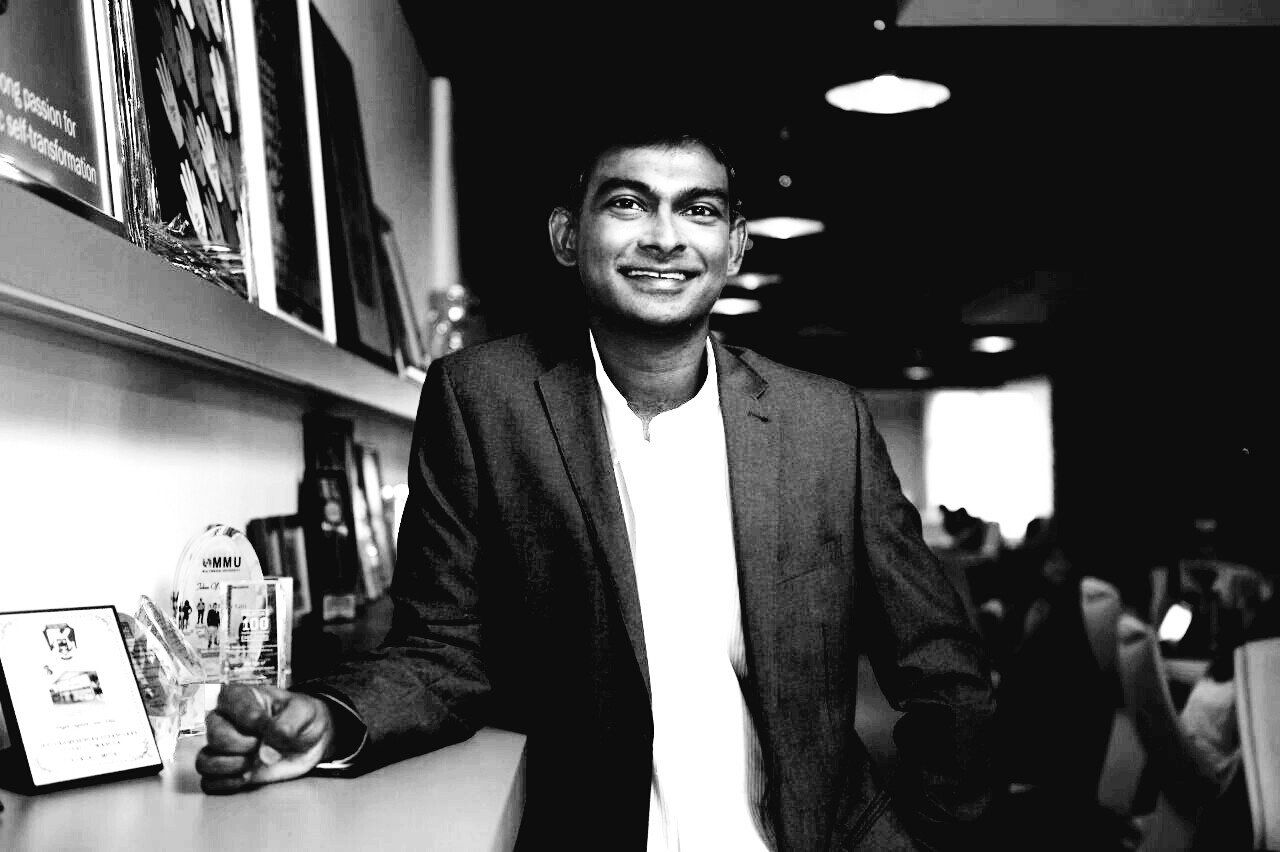The Power Of Right Role Modelling: Duck Or Swan?

For corresponding podcast, click play below:
My son insists I read a story to him every night before he sleeps. I recently read him Hans Christian Andersen’s Ugly Duckling.
It’s a simple story that begins when a swan’s egg is inadvertently left in a duck’s nest. The swan spends its formative years surrounded by ducks and starts to behave and act like a duck.
All this “ugly duckling” had as role models were other ducks and so he tried his best to conform accordingly. But the other ducks see him as a big long-necked failure.
And so the story goes on and on about how sad this ugly duckling’s life is, and how he would never go on to fulfil his potential as a beautiful swan. But as luck would have it, he one day spies other swans flying overhead and his vision of life’s possibilities is dramatically transformed.
He observes his new role models (the swans) and talks to them, soon realising he has the ability to fly. And the story ends with the ugly duckling transforming into a beautiful swan in his new environment with the other swans.
Parallels
As I read this story, I see parallels in many businesses and organisations that hire outstanding high-potential talent. But the problem is many of these talented people ultimately never fulfil their potential as “beautiful swans”.
And organisations keep hiring more high-potential employees in the hope of transforming their organisation. But the desired transformation never materialises. Why?
Most of the time, it is not due to lack of developmental opportunities. The real reason is that most never truly witness great leadership. Like the ugly duckling, with only “ducks” as their role model, they model duck-like leadership, not realising they can fly.
The key problem in many organisations is not the lack of high potential talent but in not having enough “swan-like” role models to enthuse these talents to fly.
Bill Gates talked about “Bob Gruen, Dick Russell and a guy named Weir” who became his role models and excited him about computers when he was in school.
He would never have gotten inspired to spend countless “boring” hours programming if not for these role models. True role models are those who possess the qualities that we would like to have and those who have affected us in a way that makes us want to be better people.
Every great leader has had a role model that helped them visualise themselves in the future and to realise that their dreams and goals can be fulfilled.
At 19 months, Helen Keller suffered “an acute congestion of the stomach and brain” which left her deaf and blind. However, inspired by her role model, Anne Sullivan, who challenged her to greatness, Keller became an inspiration to millions, including me.
No one questions that good role models are essential for children – increasing self-esteem, helping build moral and positive values, teaching to set and reach attainable goals.
Your employees too need role models to help them grow their careers and fulfil their potential. Just as younger siblings imitate their older siblings, employees imitate their bosses and managers.

Mandela
Nelson Mandela credits his adoptive father, Chief Jongintaba as the source of his leadership lessons, as he observed his father interact with his tribe.
Jongintaba, a tribal king, frequently held meetings where everyone would gather in a circle, expressing their opinions. The chief waited until everyone spoke before entering the conversation.
Mandela would later use his father’s technique, when holding discussions. Mandela would always listen first and speak last.
The saying “the apple doesn’t fall far from the tree” is somewhat applicable to your company too. Robert Galvin, one of the early leaders at Motorola, became the person people in Motorola “copied”.
As an exemplary role model, his “copied” leadership brought much success to Motorola in the 80s. More than 75% of young employees surveyed said that their role models were people known to them – direct managers and bosses, family members, friends and community leaders.
Regardless of how awesome Richard Branson or Jack Welch were, most of the time, you are a bigger influence to your employee’s growth and development than Branson or Welch will ever be.
People learn much more from our actions than they do from our words. Years ago, a large organisation came for help to ensure their employees were focused on corporate social responsibility (CSR) programmes.
The CEO of this organisation used every opportunity to repeatedly stress the need to get involved in CSR. Yet hardly any employee showed up at these CSR events.
I asked the CSR leader:
“Does your CEO attend any of these CSR events himself?”
He gave me this long yarn about how busy the CEO was. I immediately knew the root cause of the issue – the employees’ role modelled the leader’s behaviour, not what he said.
Role models not only “talk the talk” they “walk the talk”. In 1997, three Starbucks employees were killed in a robbery. CEO Howard Schultz immediately got on a plane and spent the entire week with the affected employees and their families.
Schultz’s compassion and incredible leadership helped heal the community there. Howard had many times alleged Starbucks was a people’s company but when his actions lived his statements, Starbucks leaders all over the world began to emulate him and his belief that people were priceless in Starbucks.
Emulating others
Role models are people who others imitate, emulate or look to for guidance. How did Costco grow into a successful retail business?
Because everyone in the organisation role-models CEO Jim Sinegal and his humble behaviour. Everyone refers to him as “Jim,” he answers his own phone, and he has a bare office with no walls.
Sinegal pays himself a modest salary and his simple contract is a page long, including a section outlining how he can be terminated for not doing his work.
His employee turnover rate is five times less than Walmart. Sinegal’s behaviour is loved and replicated by Costco employees.
Role models make all the difference in whether you end up becoming a “duck” or “swan”. NBA star Yao Ming could have ended up an unsuccessful “duck” if not for a role model. Yao faced much adversity when he struggled initially in the NBA with many “experts” predicting he would fail, including taunts from Shaquille O’Neil and Sir Charles Barkley. The media thought Yao was a big joke too. How did Yao respond?
Yao had a role model who had a never-give-up attitude, who believed in hard work. Yao observed his role model’s perseverance and quietly, through hard work and great performances, made fools of his critics. He did not resort to the verbal criticism of his detractors.
Yao, then 22 years, showed incredible class during this difficult period and has become a true role model himself.
When a role model demonstrates a strong belief in something, it inspires others to work towards the leader’s vision, even when a situation might appear hopeless.
When Chrysler’s fortunes reached a low in the 1980s, Lee Iacocca cut his salary to US$1 per year to prove his conviction that things would get better. They did. Under his leadership, the company flourished.
Celebrities and politicians are usually poor role models as you don’t see their lives up close and personal, and they generally disappoint at some point.
Tiger Woods and Wayne Rooney were role models to many but their infidelity has caused great grief to many followers.
Generally, the best and most enduring role models are people you know – people that you encounter in a real way, like your managers. You are the most important person in the lives of the people you lead.
So, the big question then is how can we become better role models for our employees and followers?

Woods
Here are five simple steps you can take to inspire “ugly ducklings” to become “great swans”:
- Be aware of your actions. Realise that someone is watching you all the time
- Identify your bad habits and behaviour. Find out your blind spots
- Once you figure out your bad habits and problems, fix them. Apologise and admit mistakes too. Nobody’s perfect. When you make a bad choice, let those who are watching and learning from you know that you made a mistake and how you plan to correct it
- Show off your good qualities. Demonstrate confidence in who you are. Make an effort to go out of your way if you think that you can help someone
- Be an inspiration. Do what you do best. Use your life to inspire greatness in others.
As a leader, many people look up to you and follow you. Mokhtar Dahari, my coach when I was playing football at Methodist Boys School KL was a big influence in my life, teaching me the merits of hard work and practice.
I copied and followed my first boss at GE, Mike Petrucelli in many ways. Each of us was inspired by different role models. Now it’s your turn to inspire others. So, go on and be a “swan” to an “ugly duckling”. You may just change a life!
To watch its corresponding Be A Leader video, click play:
Leaderonomics is a social enterprise passionate about creating great “swan” role models in Malaysia through leadership development. For more Be A Leader articles, click here. If you would like to speak to our fellow Corporate Services team on how we can help your organisation, email us at training@leaderonomics.com. To know more about what Leaderonomics do as a social enterprise, check out www.leaderonomics.org.
Leadership
Roshan is the Founder and “Kuli” of the Leaderonomics Group of companies. He believes that everyone can be a leader and "make a dent in the universe," in their own special ways. He is featured on TV, radio and numerous publications sharing the Science of Building Leaders and on leadership development. Follow him at www.roshanthiran.com






